Quick navigation to the main content of this page:
| Workable Solutions | Step-by-step Troubleshooting |
|---|---|
| Locate File Location to Fix «I saved a word document and can’t find it» | You can find the Word document by searching or using Windows File Explorer to locate your files. Input file name in the search box…Full steps |
| How to Recover Lost/Deleted Word Documents | If you can’t find the Word document or it’s lost or deleted by accident, don’t worry, use EaseUS data recovery to get back lost Word documents in simple clicks…Full steps |
| How to Recover Unsaved Word Documents | If you don’t know to restore unsaved Word documents. Here are the 2 effective ways you can try: use Temp files or apply AutoRecover…Full steps |
«I just saved and closed a word document but I can’t find it anywhere and I really need it! I closed A word document and didn’t pay attention to where I saved it and I cannot find it anywhere and I really need it and I don’t want to type 4 pages again.»
Why you can not find your word document?
- Do not remember where the word file was saved.
- Word document gets lost or deleted.
- The file gets unsaved or corrupted.
To find your data for these three reasons, we have collected a bunch of ways in the body part. Whatever the reason you can not search the file, you can get the answer in this article. Join us to handle «I saved a word document and can’t find it».
Locate File Location to Fix I Saved a Word Document and Can’t Find It
The easiest way about finding files, as we all know, is to locate your word file location. Seems too simple? But, indeed, a lot of users do not remember where they saved their files when they stored them. And you might have kept data to a path that you do not use very often, or you might have stored documents to a path that’s too long to remember. Fortunately, there are ways to locate your file location.
If you know the filename you just saved, you can find your data by search box.
Step 1. Input file name in the search box. (If you don’t know the full name of the file, you can input keyword first, then narrow down your search based on the results.)
Step 2. Check the best match result.
Also, you can use Windows File Explorer to search your files.
Step 1. Run Windows File Explorer.
Step 2. Type file name or keywords on the search box.
Step 3. Wait for the search result to complete.
If you can not locate your word files on this PC, it means your files are lost by accident or unsaved by yourself. Go to part 2 and part 3 to learn how to recover lost or deleted files and retrieve unsaved word documents.
How to Recover A Lost/Deleted Word Document
If you can not find your word files from recycle bin, the bad news is you have lost your saved word document due to accidental deletion, computer crashing, hard drive formatting. Make sure you don’t overwrite the files and all lost files are recoverable. So it’s time to restore to a robust EaseUS Data Recovery Wizard — EaseUS Data Recovery Wizard to get data back.
With this reliable file recovery tool, you can recover deleted files from your laptop/PC, HDD, SSD, SD card, USB drive, flash drive, and memory card.
Check Video Tutorial to Recover Deleted Files:
Step 1. Choose the Word file location
Choose the drive or a specific folder and click the «Scan» button.
Step 2. Locate your Word files
The software will start immediately scanning all lost data on the selected drive. After the scan, click the «Documents» option in the left panel. Choose «Word» from the category bar. Then, click «Preview».
Step 3. Recover Word files
After previewing the lost Word files, select the desired Word files and click «Recover». Then, select a folder to store the Word files.
We have written more files about how to recover deleted files, go to the full guide:
2 Built-in Functions to Recover Unsaved Word Documents
Stop hopping from page to page to learn how can I recover a word document not saved! Microsoft word has some built-in functions to restore your unsaved document. In this part, we will recommend the two easiest ways.
1 — Using Temp Files to Recover Unsaved Word Documents.
Step 1. Open Microsoft Word, click the File tab on the upper left corner.
Step 2. Click Info > Manage Document > Recover Unsaved Document.
Step 3. Check your files from dialog box > Open recovered unsaved file and click Save As button.
2 — Apply AutoRecover (If Available)
If you have set AutoRecover before, you can use this function to bring your data back.
Step 1. Open Microsoft Word > Click File tab > Choose Options > Click Save > Copy the AutoRecover file location.
Step 2. Navigate to File Explorer > Paste AutoRecover file path > Copy the .asd file.
Step 3. Open Microsoft Word > Click File tab > Choose Open > Select Recover Unsaved Documents > Paste the copied .asd file in the File name search box.
Read also:
- Remove From My Forums
-
Question
-
Using MS 365 (Word 2010).
Created a brand new document and saved it to My Documents (just like all my other documents).
Open Word back up to edit the document and the document is not in my list of documents to open.
I have performed the DOS command attrib -s -h /s /d *.* and the file still does not show in Word. However I can see the file with the dos command
in the My Documents directory.
It is not happening on every document I save but it is happening randomly for several documents.
I am also running Windows 7.
Any ideas?
Thank you!
-
Moved by
Wednesday, February 8, 2012 1:15 AM
Moving to a more appropriate forum (From:Office IT Pro General Discussions)
-
Moved by
Answers
-
Hi,
Important: This section, method, or task contains steps that tell you how to modify the registry.
322756 How to back up and restore the registry in Windows.
Please delete File Name MRU subkey, locate to following path:
HKEY_CURRENT_USERSoftwareMicrosoftOffice14.0WordFile MRU
Office rebuilds the File Name MRU subkey after you delete it, and begins to track the most recently used files again.
You can also create a registry file (.reg) by exporting that subkey of the registry in Registry Editor. Use that registry file to automatically apply the registry settings (in this case, the deletion of the most recently used files list).
More detailed information you can visit this link:
http://support.microsoft.com/kb/826208
Tip: Office 2010, change version number to «14.0«.Best regards.
William Zhou
TechNet Community Support
-
Edited by
William Zhou CHN
Tuesday, February 14, 2012 9:14 AM -
Marked as answer by
William Zhou CHN
Monday, February 20, 2012 2:47 AM
-
Edited by
There are few experiences as universally familiar as losing a Word document. Everyone from high schoolers with Catcher in the Rye book reports to business executives with quarterly earnings knows the panic of their work disappearing when it’s just a few crossed-t’s away from being completed.
Fortunately, there are dependable ways to recover Word documents quickly and reliably. Whether your work was accidentally deleted, lost in a Microsoft Word crash, or simply disappeared, here’s a simple guide on how to recover unsaved Word documents.
And remember, if all else fails, installing a data recovery program like Acronis Revive or falling back on a recent file or system backup may help get your documents back (at least in a workably recent state).
Can I retrieve a Word document that wasn’t saved?
Whether you rely on Word for personal or business tasks, losing an unsaved document sucks.
If you don’t save your Word documents manually, your files can fall victim to an unexpected crash. If you’ve already experienced such loss, chances are you have a habit of pressing the «Save» button once (or twice) every so minutes. However, not many users have that habit.
Nonetheless, even if your system crashes with an unsaved document open, you can still recover it through several options.
You can recover unsaved files through Temporary Files, AutoRecover Files, Document Recovery, Recycle Bin, and Data Recovery solutions. We’ll explore all of those options more deeply a bit later in the article.
Does Word keep backup files?
Like most programs in its class, Microsoft Word has an in-built «auto-save» feature to automatically back up your progress every few minutes. The default auto-save folder to support this function is the AppData folder.
Examples of the file path to harvest copies of your work are:
C:UsersYour_UsernameAppDataLocalMicrosoftWord
Or
C:UsersYour_UsernameAppDataLocalTemp
Or
C:UsersYour_UsernameAppDataLocalMicrosoftOfficeUnsavedFiles
Word backup files carry the «.wbk» extension. If you haven’t disabled the backup option in Word, the program will make copies of your documents regularly.
To check if the backup option is active, go to «File» -> «Options» -> «Advanced»; then scroll down to the «Save» section -> select «Always create backup copy».
Can Word save to the Cloud?
Yes, it can. If you rely on the native Windows option, your documents will be uploaded to OneDrive.
Having your documents on the cloud enables easier sharing and improves collaboration. It also allows easier mobile access (from a PC, laptop, smartphone, or tablet) and enhances data protection.
To save files to the cloud, do the following:
1. Select the «File» menu and go for the «Save As» option;
2. Choose «OneDrive»;
3. Choose a descriptive file name and go for «Save».
You can save personal and payment information to OneDrive – Personal, with work-related files going to a company OneDrive. You can also pick an alternative location in the list or «Add a Place» of your preference.
If you’re using a third-party backup solution like Acronis Cyber Protect Home Office, you can upload backup files to the Acronis cloud. Storing your files with a dedicated cloud backup service provides improved cybersecurity via backup encryption, automated backups, and concrete data recovery processes.
How do I restore a permanently deleted file?
Multitasking on a device may lead to losing critical data. (files, documents, images, audio, video, etc.)
Sometimes, you can get distracted and accidentally delete files and folders. The most common reasons for an accidental deletion are:
· Accidentally emptying your Recycle Bin;
· Erasing documents via «Shift+Delete» keys;
· Deleting files via the command line;
· Deleting files with the «Do not move deleted files to Recycle Bin» option enabled
File deletion or corruption can also result from malware or virus infection on your device.
Fortunately, you can recover perma-deleted data and documents in several feasible ways. Not all of them are guaranteed to recover permanently deleted documents, but you may try all of them in order when needed.
You can still recover seemingly perma-deleted files due to how your hard drive operates. Every file on your device resides on a specific portion of the hard drive. When you delete a file from your hard drive, the drive removes the deleted data and marks the space it used to occupy as «free» for writing new data.
However, the file can be restored to its original location unless you write new data on the newly available space. Remember, you need to act quickly – even if you don’t save new data to the hard drive manually, your computer can initiate updates or save system data on the newly available space.
In such a scenario, recovering permanently deleted files becomes close to impossible.
How to recover deleted Word documents via Backup?
Windows 10 and 11 pack a new feature called Backup and Restore.
The option enables users to create backups of their data to restore them later if needed. To recover permanently deleted files via Backup and Restore, you’d need to have enabled the option on your Windows device.
Here’s how to do it:
· Connect the external media carrier holding the backup to your primary device
· Go to «Control Panel» -> select «System and Security» -> click «Backup and Restore (Windows 7)» option
· Once in the Backup and Restore menu, go for the «Restore my files» option -> a Restore wizard will pop up to start file recovery
· If you can’t find the «Restore my files» option, go for the «Select another backup to restore files» option. Again, a wizard will pop up to assist you with your recovery
Recovering via Backup and Restore will replace all data on your Windows device with backed-up data. So, to avoid further data loss, make sure the backup contains all your crucial data.
How to recover deleted Word documents via Previous Windows 10/11 version?
Windows 10 and 11 offer another convenient feature to restore permanently deleted files – the «File History» option. If you had enabled the option before deleting a document, you could use it to recover permanently deleted files without additional software.
To do so:
· Type «File History» in the Start menu or the Windows search bar
· Select «File History Settings»
· From the left panel on the pop-up window, choose «Restore personal files»
· Navigate the feature to the backup you wish to restore. You can do that via the left and right navigation buttons at the bottom of the window. While you switch between backups, you can preview backup dates and the folders within them
· Once you’ve located the specific backup storing the deleted documents, press the «Restore» button to recover the files to their original location
· If Windows suggests it already carries a file with the same name in the destination folder, go for the «Replace the file in the destination» option
Lastly, close the window and check if the recovery is successful.
How to recover deleted Word documents via Command Prompt?
Sometimes, files and folders can be hidden due to the «Hidden files and folders» feature in Windows. You can use the Command Prompt to try and recover them.
To do so:
· Type in «cmd» in the Search Bar on the Start menu
· Choose the «Run as administrator» option
· Type chkdsk *: /f in the Command Prompt. The * represents the letter of your hard drive, so replace it properly. Once you do, hit «Enter»
· Type ATTRIB -H -R -S /S /D D:*.* in the Command Prompt window. Here, replace the «D» with the letter corresponding to your hard drive. Once you do, hit «Enter» again
A recovery process should start immediately if you’ve followed the above steps successfully. Let it finish and check if your files have been restored.
How to recover deleted Word documents via System Restore?
If you’re running Windows 10 or 11, you can opt for a System Restore to recover permanently deleted files. As System Restore takes regular (automated) snapshots of your whole OS, you can revert any unwanted changes to your system by reverting it to a previous point in time.
However, you’d need to have activated the System Restore option beforehand.
To recover perma-deleted files via System Restore, you need to:
· Type in «create a restore point» in the Start menu or Windows search bar, and click «Enter»
· Select «System Restore»
· Go through potential system restore points in time and select the most appropriate to recover the deleted document; then, click «Next»
· Confirm the specific restore point and choose «Finish»
· Your PC or laptop will then restart to allow Windows to apply the changes
Although this option is convenient, you must remember that System Restore may affect recently installed drives, programs, and browser updates. As its primary goal is to repair your Windows environment, it will revert your device to an older version of itself. And that older version may not have some programs or apps installed or updated correctly.
Nonetheless, before the System Restore process starts, the feature will show you a window containing all programs that will be affected by it. This way, you can back up all potentially affected programs and files before you revert your system.
How to recover deleted Word documents via System Image Recovery?
System Image backup enables users to back up the entirety of a Windows 10 or 11 OS. However, the feature doesn’t allow single file and folder backup, so you wouldn’t be able to restore individual documents if needed.
Here, it’s either recover everything or don’t recover anything.
To recover documents via System Image Recovery, you need to:
· Type «settings» in the Start menu or Windows search bar, and click «Enter»
· Browse and select «Update & Security»
· From the options list on the left, go for «Recovery»
· Save the progress on any open documents or programs
· Then, go for the «Restart now» button (you can find it under «Advanced Startup»)
· Afterward, select “Troubleshoot” -> “Advanced Options” -> “See more recovery options” -> “System Image Recovery”
· Browse through the list of System Image backup files and select the one containing the deleted document, then click «Next»
· Choose additional restore options, then click «Next»
· Review all System Image properties and click on «Finish» to start the restoration process
Once the restoration is complete, the deleted document should be restored to its original location. (or an alternative location, if you’ve chosen so in the Restore settings)
How to recover deleted Word documents via a third-party Backup solution?
If you’re using a dedicated backup solution, you can initiate data recovery and restore permanently deleted files from your device.
For example, Acronis Backup and Recovery enables users to initiate efficient backups with over 20 supported platforms. Via the cloud, your data is securely stored in physical, cloud, virtual, and mobile environments.
If you need to recover files from Acronis backup, you can do it via the user-friendly interface.
To do so:
· Start Acronis Cyber Protect Home Office -> select «Backup» on the sidebar
· Select the backup containing the deleted documents from the backup list
· On the panel to the right, select «Recovery»
· The interface will present you with possible recovery models for the selected backup; depending on the backup’s type, you’d be able to choose from «Entire PC», «Disks», «Partitions», and «Files» options. To recover one or more documents, select «Files»
· Cyber Protect Home Office will display the backup’s properties and the data inside it. Then, select a specific version of the backup based on the date and time. The default option here is the latest backup
· The panel on the left lets you navigate the files you wish to restore in the panel on the right; after you select all needed documents, press «Next»
· Choose a recovery destination on your device to place the selected documents after restoration. Here, you have two options – recover the data to its original location or choose a new location via the «Browse» button
· You can customize the recovery settings for the current session via the «Recovery options» menu.
· Once you’re done with the settings, go for the «Recovery now» button.
You can terminate recovery via the «Cancel» button at any time. However, aborted recoveries can still cause changes in the selected destination folder, so only go for the option if absolutely necessary.
Tips on preventing your Word Files from being deleted or unsaved
How to recover Unsaved Word Document?
We rely heavily on autosaves, yet huge chunks of progress and entire versions of documents can be lost when we don’t manually save our work. The good news is, this problem is so common that Microsoft has made it easy to recover unsaved Word documents:
1. In MS Word, click the File Tab in the upper left.
2. Click Manage Document and select Recover Unsaved Documents from the drop-down list.
3. Check for your missing file in the dialog box. If it was a recent loss it should appear.
4. Open the recovered Word document and click the Save As button in the top banner.
Did You Know?
You can update the frequency with which Microsoft Word autosaves your documents. Click File > Options > Save and change the number of minutes to ensure you have a recoverable version of all your docs available in case you need to recover Word documents in the future.
Knowing how to recover deleted Word documents will make you seem like a wizard to many of the people in your office, but it’s not complicated at all. Whether you’re trying to recover MS Word documents that were accidentally deleted or compromised by malware, there are a few easy steps that could help you get it back.
1. On your desktop, open the Recycle Bin
2. Search for your file by document name, file type, or date deleted. If you find your missing file, note the Original Location. When you recover deleted Word documents, they automatically are restored to that location.
3. Restore the deleted document and either find it in its original location or click Quick Access to find it in the Recent Files list.
Did You Know?
When a file is deleted you’re actually just removing a marker that points to where the file was stored on the disc. The file actually exists on the disc until its space is overwritten by new information. Until that happens, you have a chance to recover Word documents.
How to recover Word Documents after a Crash?
Recovering Word documents that didn’t save doesn’t always stem from user errors. Whether your system unexpectedly went down or Microsoft Word crashed, Word documents can be recovered if you quickly search for the lost files before other files can take their disk space.
1. When your system comes back online, reopen Microsoft Word. The program automatically recovers unsaved Word documents in most cases.
2. If your document doesn’t appear in the AutoRecover list, click on File, then Options, then Save.
3. Copy the AutoRecover file location filepath and paste it into File Explorer.
4. Open the folder with your document’s name and copy the .asd file with the most recent modification date and time.
5. Return to MS Word, click File, then Open, then scroll to the bottom of the recent documents list and click Recover Unsaved Documents.
6. Paste the copied file into the folder that pops up and open the file to recover it.
Did You Know?
One of the most common reasons for Microsoft Word crashing is corrupt add-on or template. If your program consistently crashes, try running Word without any of these features loaded to see if that helps to improve reliability.
Can I recover a permanently deleted word doc without a backup?
Recovering a permanently deleted file via backup is the easiest and most reliable option. However, sometimes, users don’t have the chance to add a specific document to the backup. If they then accidentally delete the document, recovery gets a hell of a lot more complicated.
In such a scenario, you have two primary options.
The first one is to use data recovery software. Nowadays, many recovery tools claim to have an exceptionally high rate of recovering permanently deleted files. Usually, such solutions can recover over 1000 file types and formats and claim to restore data even from corrupted partitions or bad sectors on your hard drive.
They typically operate by collecting the lost data bit-by-bit until they can fully restore its original state. Such an approach can prove handy occasionally, but that depends heavily on the state of your computer’s hard drive.
If you lose a document due to a bad sector on your hard drive, the software may not be able to recover all of the document’s pieces successfully. This may lead to an altered version of the document or may not be able to restore it at all. In such a case, the document would be lost unless you have it stored in some form of backup.
This leads us to the second option.
Suppose a user perma-deletes a document by accident. In that case, most often, their reaction is to panic, especially if they don’t have the document stored in a backup outside their primary device.
However, we live in a technologically webbed world – anyone can send documents to multiple recipients via email, social media platforms, or free cloud services.
You can go through old emails, check DropBox or OneDrive shared storage, or go through your correspondence on Facebook and Instagram to find the deleted file. Nonetheless, if you’re 100% sure you haven’t sent the document to anyone, you can opt for the data recovery software option.
As we’ve mentioned, AutoSave is an in-built feature available in Word, Excel, and PowerPoint. (given you have a Microsoft 365 subscription)
AutoSave saves the progress on your Word files every few seconds unless you tell it otherwise. If you store your Word files on OneDrive, SharePoint, or OneDrive for Business, AutoSave is enabled by default.
To save a copy of your work before implementing any changes, it’s better to use the command «File -> Save a Copy» rather than «File -> Save As». That way, AutoSave will not overwrite the original document with the changes you make afterward.
If you skip that step and end up with an overwritten document, you can still restore the original via Version History. To do so:
· Open the Word file you wish to restore to a previous version
· At the top of the windows, click on the filename and go for «Version History»
· Review the dates and times of all versions to find the one you wish to restore -> click «Open Version»
· An additional window will pop up and show you the specific version of the document
· Once you’ve made sure this is the version you want to restore, click «Restore»
Whenever you open a Word document and make first changes, AutoSave will save those changes by adding a new file version to Version History. Afterward, AutoSave will regularly save changes to the document but only add new versions to Version History about every 10 minutes until you terminate the session. (ending the session means closing the Word document)
How do I get Microsoft Word to save AutoRecover versions every minute?
If you’re handling critical information via Word documents, saving a version of the file every 10 minutes may seem risky. However, Microsoft has thought of that – you can change the AutoRecover frequency to any number that suits you.
Here’s how to do it:
· Open Word and go to File -> Options -> Save
· You’ll see a settings section labeled «Save documents»
· Under the «Save documents» line, type your chosen number (of minutes) in the «Save AutoRecover information every (…)» box
· Once done, press «OK»
If you want to change the location for AutoRecover documents, go to:
· File -> Options -> Save
· Under the «Save documents» line, browse or type in the save path for saved documents in the «AutoRecover file location» field
· Once done, press «OK»
The AutoRecover settings window allows you to also:
· Disable AutoSave for OneDrive and SharePoint online files by default
· Change the cache location for AutoRecover files. The default should be «C:UsersYour_UsernameAppDataRoamingMicrosoft[OFFICEAPPFOLDER]
· Enable AutoSave on the computer by default
According to Microsoft, however, there is no option to use AutoSave locally in Office 2019 or 2021. Nonetheless, the AutoRecovery feature is still active to periodically save copies of your Word files to negate accidental data loss due to a crash.
Can I turn on AutoRecover in Word for Mac?
As with Windows, AutoRecover is available for Mac to protect the progress on your Word documents. Its default function here is the same – it makes a copy of your document every 10 minutes.
To enable AutoRecover and set the timeframe for making copies, you need to:
· With Word open on your Mac, go to the «Word» submenu on the top
· Choose «Preferences»
· Choose the «Save» option
· Choose «Save Auto-Recovery Information» and type in the duration you wish to set for AutoRecover copy creation
Microsoft advises users not to rely on AutoRecover as a substitute for manually saving their documents. (by clicking on the «Save» icon)
The most optimal way to preserve changes to your document is by manually saving it after every significant change. Nonetheless, it doesn’t hurt to set the AutoRecover timer to 5 minutes instead of 10 to guarantee you won’t lose progress due to a crash.
Keep in mind, when you manually save a document, its previous AutoRecover versions are removed.
On the other hand, AutoSave is a feature that saves your documents as you work on them. It works as if you’ve manually saved your progress. For Mac, AutoSave is available in Word, Excel, and PowerPoint for Mac and Microsoft 365 subscribers.
If you have AutoSave enabled, it’s less likely you’d need to rely on AutoRecover files.
Where is Autosave in Word located on Mac?
The AutoSave and AutoRecover features are linked in the Word menu. The path to enable AutoSave follows the same steps as with AutoRecover. However, you’ll have a few extra steps to complete before AutoSave is active for Word on your Mac.
Here’s how to do it:
· Open Word
· From the top menu, choose «Word» -> «Preferences»
· Click on the «Save» icon
· Tick the checkbox labeled «Turn on AutoSave by default»
· From the Word document, enable the AutoSave toggle to save your progress to the cloud (OneDrive or SharePoint)
· Explore more options from the AutoSave tab and select the «Automatically Save» option
· The AutoSave toggle will appear on the top side of the Word toolbar
· Name the document you’re working on and choose OneDrive or SharePoint as the storage location of the Word file
· Click «Save» to enable AutoSave to store changes in your desired location in real-time
· Your document will then be uploaded to the chosen location
·Once that’s done, AutoSave is on, and all changes you make to the document will be saved to OneDrive or SharePoint
Where can I find AutoSave Word documents on my computer?
If a power failure or a crash occurs, AutoRecover will typically recover the last version of your Word document automatically when you launch the app. Once AutoRecover opens the existing recovery file, it’s best to save it before editing or closing it immediately.
However, you may need to find AutoRecover files on your computer for other reasons. To do so:
· Switch to Finder
· Click «Go»
· Click «Go to Folder» (you can also use the SHIFT + COMMAND + G combo)
· Enter the specific folder path corresponding to Word, Excel, or PowerPoint
For Word:
/Users/Your_Username/Library/Containers/com.Microsoft/Data/Library/Preferences/AutoRecovery
For Excel:
/Users/Your_Username/Library/Containers/com.microsoft.Excel/Data/Library/Application Support/Microsoft
For PowerPoint: /Users/Your_Username/Library/Containers/com.Microsoft.Powerpoint/Data/Library/Preferences/AutoRecovery
Just a reminder: Replace «Your_Username» with your actual username.
As the AutoRecovery folder is hidden, typically, you won’t be able to find it by navigating in Finder. That’s why you need to use the «Go to Folder» feature and type in the full path to reach the folder.
Additionally, if you close a Word document and click «Don’t Save», the AutoRecover option won’t be active. The feature will delete the AutoRecover file because it assumes everything is okay and you wouldn’t need the AutoRecover file.
Can Microsoft Word recover previous versions of my document?
If you have turned the AutoRecover option on, it will automatically save versions of your documents regularly. (usually, at 10-minute intervals)
Once you have the AutoRecover files for your document, you can recover them depending on when you saved them.
There are two options: recover a saved file or an unsaved one.
If you have saved the document, you have to:
· Open the document you were working on
· Select “File” -> “Info”
· Find «Manage Documents» and choose the file labeled (when I closed without saving)
· A bar on the top of the file will appear; choose «Restore» to overwrite any previously saved versions
You can also compare AutoRecover versions by choosing «Compare» instead of «Restore».
If you haven’t saved the document, you have to:
· Open Word and go for “File” -> “Info” -> “Manage Document” -> “Recover Unsaved Documents”
· Select the specific file and click «Open»
· In the top file bar, choose «Save As» to save the document
If you have stored AutoRecover files in OneDrive or SharePoint in Microsoft 365, you can view all historical versions of a document.
To do so in Office 365:
· Open the file you want to inspect
· Select “File” -> “Info” -> “Version History”
· Browse through versions and select them to open them in a separate window
· If you want to restore the document to one of the previous versions, choose «Restore»
Keep in mind, if you operate via a Microsoft account, you’d be able to retrieve the last 25 versions of a document. If you sign in with a school or work account, the retrievable version volume will depend on your library configuration.
To view AutoRecover versions in Office 2019-2016:
· Open the document you want to inspect
· Click “File” -> “History”
· Choose a version to open in a separate window
If you can’t locate the «History» tab on the Word navigation pane, you may have a subscription version of Microsoft Office. If that’s the case, click the «Info» button and try accessing Version History from there.
To view AutoRecover versions on Mac:
· Open the document you want to view
· If you are using Microsoft 365 for Mac, choose the name of the document from the app’s title bar -> click «Browse Version History»
If you’re running Office 2016 or 2019 for Mac, go for «File» -> «Browse Version History»
· Browse AutoRecover versions and choose which ones to open in a separate window.
To view AutoRecover versions on the web:
· Open the document you want to view
· Go for “File” -> “Info” -> “Version History”
· Browse through AutoRecover versions and open the ones you want in a separate window
· When you find the version you’re looking for, choose «Restore»
If you use SharePoint in Microsoft 365 to handle documents, you can track AutoRecover versions, share them with others, and check recycle bin storage if you accidentally delete a file.
How to search for Word doc which I know I saved?
If you’re sure you have saved a Word document but haven’t been able to locate it, worry not. There are several ways to unfold saved documents, even when you’re computer is swamped with Word files.
You can search a file via the taskbar, the Documents tab, or File Explorer.
To find a Word document via the taskbar, type in the document’s name (if you remember it correctly) into the search box on the Windows taskbar. If you don’t know the full name of the document, you can use a keyword from it.
You can get results even if you remember a keyword from the text body of the document. (and not its name)
Once you type the name or keyword, Windows will show all matches on your device and OneDrive.
You can select the Documents tab if you wish to narrow your search. Once you do, your search results will only show documents.
Moreover, you can open File Explorer from a taskbar shortcut or right-click the Windows Start menu and choose File Explorer. Afterward, you can select a location on your hard drive from the left window pane.
You can then search or browse to find the document you need. You can search your entire device by selecting «This PC», or go for «Documents» and only look for files stored there.
How to search for Word backup files?
Although Word backup is seamless once set up for users, finding specific Word backups may be difficult without preparation. Luckily, you can learn how to pinpoint different Word backups below.
Check Word settings
If you remember how to open the AutoSave settings in Word, you can skip the next set of instructions. If not, you need to:
· Start Word -> click on «File»
· Choose «Options» and then click on «Save» on the left
· Ensure that the «Save AutoRecover information» option is enabled
Once you reach the settings window, go to the AutoRecover File Location field. Here, you can check the current AutoSave directory location.
By default, it would be «C:UsersYour_UsernameAppDataRoamingMicrosoftWord»
Once you locate the AutoSave directory location, you need to:
· Launch Word
· Navigate to the AutoSave directory
· Look for the version of the automatically saved backup and double-click it; the file will open in Word
As we’ve mentioned, the AutoSave directory may be a hidden folder on your computer, primarily if it resides in the AppData folder. However, you can bypass that by pasting the directory location in File Explorer’s address bar.
Nevertheless, you can navigate to the folder manually if you follow the path. Just make sure to reveal hidden items to be able to see the AppData folder. Once that’s done, you should easily find your way to the AutoSave directory.
Check the AppData folder
As we’ve said, the AppData folder is the default location for AutoSave backups. The pathing to the AutoSave directory can vary; the most common places to look are:
C:UsersYour_usernameAppDataLocalMicrosoftWord
and
C:UsersYour_usernameAppDataLocalTemp
Sometimes, the most recent AutoSave versions may use a different location. Most often, you’d be able to find them in
C:UsersYour_usernameAppDataLocalMicrosoftOfficeUnsavedFiles
As with previously shown paths, replace «Your_Username» with the username corresponding to your user account.
Regardless of which folder holds your Word backups, the AutoSave files have weird-looking names, especially for a casual user. They typically have a tilde before their name and the «.tmp» extension alongside a 4-digit number assigned to them.
Below are some examples of what Word backup files look like in different scenarios:
· ~wrdxxxx.tmp – such a name relates to a Word document within an AutoSave folder;
· ~wrfxxxx.tmp – such a name relates to a temporary document file;
· ~wraxxxx.tmp – such a name relates to an AutoRecovery file;
Complete AutoRecovery files won’t carry the «.tmp» extension but rather the «.wbk» extension. Once you locate them, you can double-click them to open the document in Word. An important note is always to save the file after you open it.
How to use the Recover unsaved documents option?
Sometimes, you’re sure you’ve saved a Word document, but your PC crashes, and you can’t locate the file afterward.
In such cases, you can still recover the document from the AutoSave location. To do so:
· Open Word and go to «File»
· Click «Recent», then select «Recover Unsaved Documents»
· You will be redirected to the AutoSave location folder; you can browse the documents here and find the one you’re looking for
Another path to reach the AutoSave folder is as follows:
“File” -> “Info” -> “Manage Versions” -> “Recover Unsaved Documents”
After you open the file, make sure to save it.
Check the Documents directory
To check the Documents directory, you should:
· Start Word
· Select «File», then choose «Open»
· Go for «Browse» and navigate to the directory you suspect holds the document
· Ensure to change the File Type of the folder from «All Word documents» to «All Files»
· If you’ve opened the correct folder, you should be able to see all corresponding backup files; you should easily spot the specific file as it is typically titled «Backup of (…)»
· Once you find the backup, you can open and save it
How to search your Windows temporary files manually?
In some instances, finding a backup file via traditional methods is more challenging, especially if you can’t find the AutoSave folder.
However, you can manually search for temporary files by tracking their extensions. Autosaved Word files usually carry the .asd or .wbk file extension.
To search for those, you should:
· Press the Windows Key + E on your keyboard; this will launch the File Explorer
· Once it’s up, click on the search bar on the top right
· Type in «.asd» or «.wbk» (without the quotes)
· Press «Enter»
· Windows will now search for all .asd and .wbk extensions
· Once the search is complete, you can browse through the matches and find the file you’re looking for
· Upon finding the specific file, right-click it and choose «Open File Location»; this will open the AutoSave directory location so that you can see all automatically saved backup files
If searching for .asd and .wbk extensions doesn’t bear any fruits, you can search for .tmp extensions. However, .tmp files aren’t necessarily all Word files. Many of them can support files from other applications, so you’d have to do some sorting.
How to recover Word Documents through Data Recovery Programs?
If none of these methods help you recover unsaved Word documents, your best bet is either backup software or data recovery software.
As always, the most secure and reliable way to recover data is with regular full image backups. Whether you use a Windows PC, a Mac, or a mobile device, having up-to-date backups ensure that you don’t lose your files – no matter what.
That said, if you didn’t have a backup plan in-place and active when you lost your Word document, you won’t have a backup to restore the file from.
In this case, personal cyber protection solutions like Acronis Cyber Protect Home Office are the best way to help you recover Word documents. Acronis Cyber Protect Home Office is an easy-to-use software solution that allows you to backup up the entire contents of your system so in the event of a disaster, you can locate a lost file and restore the MS Word document with just a few clicks.
Final Thought
Whether your Word doc was deleted, encrypted by malware or corrupted when it was saved on a faulty partition, you can recover it with Acronis Cyber Protect Home Office. When armed with regular backups, your docs can be recovered quickly and easily so you never have to worry about losing a Word doc or any other file ever again.

How to recover an unsaved Word document using Microsoft Word 2010, Word 2013, and Word 2016
- Click the File tab / Manage Documents.
- Click the Manage Document button.
- From the drop down list, click Recover Unsaved Documents.
- The Open dialog box opens displaying a list of your unsaved recoverable Word documents. Select the Word document you wish to recover and click the Open button.
- The recovered Word document is now open and displays an information banner across the top recommending that you Save the file.
- Click the Save As button and save your Word document.
Not only have you recover your document quickly but it is also saved for future access.
There are few things as frustrating as having to redo work that you just did. If you like these tips, check out our video on 10 amazingly useful features in Word. We love to help people have “AHA!” moments!
Closing an existing Word document without saving it
Another situation you might find yourself in: accidentally closing out of a previously saved document but failing to save the latest changes. Microsoft Word will help you recover up to the last 10 minutes of your work. You can also change the amount of time you would like Word to save a recoverable copy of your work. In the screen shot below you will see that I had Word save a temporary copy of my document every minute. I then changed it back to the default setting of 10 minutes.
- Click the File tab / Manage Documents.
- Locate and click on the latest autosave version to recover the latest changes made to your document. Don’t forget to Save your recovered Word document.
Change the save AutoRecover information time
If you would like change the frequency with which Microsoft Word automatically saves a recoverable copy of your document, follow the steps below. The default time is set to 10 minutes.
- Click the File tab / Options.
- In the Options dialog box click the Save option located on the left side.
- Under Save documents change the minutes to how often you would like Word to save a recoverable version of your document.
- When finished click OK
Here’s hoping that you are able to recover all of your work!
You might also like…
This is a long post that I hope will help a few desperate souls out there: how to find your lost Word, Excel or PowerPoint files?
Google “lost file opened from email attachment”, “rescue lost word doc” or “word document that I opened from my email did not save on my copmuter” and you can witness the misery of dozens (thousands? millions?) of poor computer users who lost their dissertations, school papers or theses after they emailed it to themselves, opened the document, and saved it – just to discover they can’t find the files they spent hours working on.

I lost my Word / Excel / other file after opening it from email
The scenario is always the same. You:
- Opened a file from your webmail, typically using Internet Explorer.
- Made lots of changes and saved at least a few times.
- Closed Word or Excel.
- Tried to reopen the file but couldn’t find it.
Why it happens
This typically happens to users of Hotmail or Outlook Web Access (OWA), usually when you use Internet Explorer (especially versions earlier than IE9). Google Chrome is built differently (and better in this case, in my opinion).
In Internet Explorer, when you click on an attachment you have two options: “open” and “save”. If you clicked “save”, you’d be fine. You will be able to save the file somewhere (e.g. on the desktop) and continue working. The only way to lose the file is if you delete it or forgot where you saved it. In any case you can just search for it. In Chrome, any file you open is automatically downloaded and saved, too.
If you clicked, “open”, however, you’re entering zombie land. Word will show you the document (maybe after a warning that you opened a downloaded file). You will be able to edit and save the document regularly. But little do you know that you’re saving the file in a “safe zone” (technically, a system folder) used for files downloaded from the web. I call it zombie land because you have no idea that the files you’re saving will disappear the second you shut down Word. Worst of all, because files are saved in this zombie land, you won’t be able to find these files when you search for them.
How to rescue the file you opened, saved and is now gone?
Luckily, there’s a way to rescue these files, especially if only a short time passed since you’ve opened and closed them. Here are the instructions for Windows 7 or Windows Vista users, English version.
<disclaimer> Please be careful and follow the instructions closely, as you can cause damage, too. If you’re not sure what you’re doing, ask a friend to help. I’m just trying to help you but I can’t assume responsibility if something goes wrong… </disclaimer>
- Most importantly, do not try to re-open the file from your email. If you have done so already, you may have overwritten your file. You’ll know soon enough.
- Click Start (bottom left icon on your desktop) or on your keyboard’s Windows key. If you don’t have a Start menu (e.g. if you’re using Windows 8), tap Windows logo key
+R.
- Your cursor should blink in the search bar. Just copy and paste this line
%userprofile%AppDataLocalMicrosoftWindowsTemporary Internet FilesContent.IE5
and tap Enter. If this happened to you when using Firefox, please use this line instead: %userprofile%AppDataLocaltemp (Thanks to Paul who commented below for this tip!)This will open the special folder where temporary downloaded files are saved. Annoyingly, Windows doesn’t show you this folder unless you manually type it. - We now need to show the hidden system files where Windows saved your files. Click Alt+T to show the Tools menu. Click the fourth option, “Folders options”.
- You should now see the Folder Options dialog box. At the top, choose the ‘View’ tab to see the Advanced Settings. Under ‘Hidden files and folders’, choose the option ‘Show hidden files, folders and drives’.
- Underneath, un-check the box of the option ‘Hide protected operating system files (Recommended)’. Approve the warning message by clicking ‘Yes’. Don’t worry, we’ll put everything back to place later. Click OK to close the dialog box.
- You should now see many more folders and icons. Some will appear a bit transparent – that means they’re hidden files.
- The folder will contains many folders that have strange names like ANH4N2W1, etc. Your files will be in one of them. The easiest way to find the file is by sorting the list by ‘Date modified’ and opening each folder at a time. Just click Alt+V to show the View menu, then choose Sort by, and ‘Date Modified’ and ‘Descending’ to show the latest files first.
- Double click to open each folder. You’ll get an annoying warning message each time you do so, just approve it.
- When you open a folder, again sort it by ‘Date Modified’. You can also sort by ‘Type’ to show your Microsoft Word files first.
- If you’re lucky, you’ll find your missing file in no time. Just notice the file size – if it’s 1 KB you are probably looking at a temporary file created by Word and not at the file you saved. Just copy the files you found to your desktop or to your My Documents folder.
- Check each folder until you find your file. Jump up in the air and thank God if you have found what you’re looking for. My sincerest sympathies if you couldn’t find it.
- When you’re done, you should return Windows to its normal state by hiding again the hidden folders. In Explorer (the file browser window), just click again Alt+T, Folder Options, View tab, and check the box ‘Hide protected operation system files’ and choose the option ‘Don’t show hidden files, folders or drives’.
If it all worked for you, scroll to the bottom of this page and add your comment. I’m so glad I could help. Just remember to never, ever, click ‘open’. Always save documents to the right folder before opening and editing them. It’s safer and would save you trouble. Or consider switching to Google Chrome or the latest version of Internet Explorer. That’ll save you at least this sort of trouble.
27-7-2012 update: Cool! This post has been featured in Wired UK magazine.
11-4-2013 update: Thanks for all the offers for a free drink! I plan a worldwide tour after the 1,000th comment.
09-10-2014 update: 1,000 comments! Wow! Apparently more than 140,000 people viewed this post. Glad I could help.
Personal blog of Oded Ran
Get your lost/unsaved doc back with autosaved word documents right away.
Last Updated on December 8, 2020 by Ian McEwan
All Methods Here Apply to Microsoft Office Word 2003/2007/2010/2013
For quite some time now, Microsoft Word has provided users with an autosave feature which saves documents being worked on without an express prompt from the user. This has proved very efficient in situations where the computer goes off or crashes when the user has not yet saved their work. However, the question arises as to how one can find these autosaved word documents when they log back into the computer. Moreover, how to open .asd file when you find it.
Normally, you can easily restore your lost word document after a restart. Because a Document Recovery window pane will open up in the Word, and you can choose the latest file from the recoverable document list to resume.
If the Document Recovery doesn’t show up or you’re a Mac user, try the methods below.
Part 1: Effective Ways to Find Autosaved Word Documents On Win/ Mac
- Method 1: Find Autosaved Word Documents From App Data Folder
- Method 2: Recover Autosaved Word Documents With Data Recovery Tool
- Other methods which are worth a shot
Part 2: Why are my AutoSaved Word file in .asd format rather than .doc? How to open .asd file?
Part 3: Setup AutoRecover.
Part 1: Effective Ways to Find Autosaved Word Documents On Win/ Mac
Method 1: Find Autosaved Word Documents From App Data Folder on Windows And Mac
For Windows Users:
The default AutoRecover location for the documents that MS Word has autosaved is the App Data folder located in the system partition of the hard disk.
In most computers, this is the partition labeled ‘C’. The path to access this folder is as follows C:Users*user name* AppDataRoamingMicrosoftWord where the *user name* is the name of the user that was logged in at the time when the document was auto-saved.
Or, you can open an Explorer window and paste %AppData%MicrosoftWord into the address bar and press Enter.
It is important to note that the App Data folder is normally hidden. Therefore, the user would have to first of all show hidden folders in the control panel to be able to view it.
Learn how to open .asd file here.
For Mac users:
Like Word for Windows, Microsoft Word for Mac has document recovery feature, which is AutoRecovery, to prevent users from losing unsaved progress in a document, if either MS Word or the Mac are shut down(crash) unexpectedly.
Find the autosaved file on mac to recover unsaved/lost word document, all you need to do is to locate the AutoRecovery folder:
- Quit Word for Mac and Open Finder, then click “Go” > “Go to Folder”.
- Copy and paste “~/Library/Containers/com.microsoft.Word/Data/Library/Preferences/AutoRecovery” and click “Go” to open the AutoRecovery folder
- There, all the files, which start with the words “AutoRecovery save of”, are what you looking for.
Simply select the most related one and change the filename extension to “.doc”.
Method 2: Recover Autosaved Word Documents With Data Recovery Tool On Windows And Mac
In some situations, it might prove difficult to find the important documents even after following the methods above.
So, to speed the process of finding autosaved doc or recover deleted word document, using an ideal Data Recovery tool will be a must.
One thing Data Recover can do is quickly locate your autosaved word file with its quick scan mode.
No need to find the folder on your own or any other aforementioned steps. It should offer a little extra peace of mind.
- Just download the free trial and have it run on your Win/Mac, then press Scan.
Win Download
Mac Download
Win Download
Mac Download - With any luck, it will show you the autosaved/lost file in a minute. If it doesn’t, use the “Deep Scan” or “All-Around Recovery” function.
- Chance are all your files, such as Videos, Images, Audios or Email, etc., which were permanently deleted or lost recently, can be recovered with the data recovery tool. But you can speed up the deep-scanning by selecting the file type first or using the Filter button.
- After deep scan, you can preview the word document and click “Recover” to save it.
Since the usages of all data recovery software are pretty much the same, here are top 4 Data Recovery software (Win and Mac) in 2020 for you to choose from.
- #1 Aiseesoft Data RecoveryAiseesoft Data Recovery
- #2 Stellar Data RecoveryStellar Data Recovery
- #3 Wondershare RecoveritWondershare Recoverit
- #4 EaseUs Data Recovery WizardEaseUs Data Recovery Wizard
*Why Are My AutoSaved Word File in .asd Format Rather Than .doc? Click here to learn how to open .asd file.
Other Methods Which Are Worth a Shot
Checking the Initial Save Directory For Word Backup Files
There are times when the autosave file is saved in the directory where the original document was saved, in case changes were being made to it.
To open this document, you would first have to launch MS Word, then go to File, then click Open. (If you are word 2013 user, you need to click Computer and Browse after that.) Then go to the directory where the original document was saved.
Ensure that you have changed the file type ‘All Word Documents‘ to ‘All Files‘ from the dropdown menu. You will be able to identify the file as it will have ‘Back up of‘ in its name.
Use “Recover Unsaved Documents” Feature
In situations where one’s computer unexpectedly shuts down or crashes, there is always a chance that they can recover their unsaved documents.
For Word 2010 user: The first step would be to reopen MS Word then go to File, then select Recent, then Recover Unsaved Documents.
For Word 2013 user: Go to File >Open > Recent Documents and click Recover Unsaved Documents at the end of all Recent Document.
There you can find autosaved word documents and can, therefore, select the file you need to open. It is highly advisable to save the document immediately after recovering it to avoid the inconvenience of having to look for it again.
Manual Searching
The next possible step would be to manually search the computer for files with the .asd or .wbk extensions.
These files are backup copies of MS Word documents. This search can be done by first opening the Windows Explorer by pressing the Windows button and letter E at the same time, then typing .asd or .wbk in the search box at the top right corner of the window.
You can then right click the file found and click on the ‘show file location’ option. The folder containing the autosaved files will open up. Another kind of files to search for is those with the .tmp file extension. However, not all .tmp files are necessarily related to word documents.
Those related to MS Word look like the following: ~wrdxxxx.tmp, ~wrfxxxx.tmp or~waxxxx.tmp where the xxxx part represents a series of four numbers assigned to the files.
The above methods have proven to be very effective when one wants to try to find autosaved word documents and should, therefore, be tried out in the event of loss of unsaved work.
Part 2: Why Are My AutoSaved Word File in .asd Format Rather Than .doc? How to open a .asd file?
Now that you have found your AutoSaved word document.
But the head-scratching part of Microsoft Word AutoRecover feature is that the autosaved word format is in .asd rather than .doc.
And you can’t even open it if the autosaved file is not in the Recovery folder.
However, if someone told you “Files with the file extension .asd can only be launched by certain applications.” don’t trust them.
You just need to follow the step below:
- Go to the Recovery folder as below.
C:Users*your user name*AppDataRoamingMicrosoftWord
- Drag your .asd file into this folder and create a new word document.
- Open the new doc, go to File > Info > Manage Document
- Click Recover Unsaved Documents.
- Select your .asd file and click open. Done!
Part 3: Setup AutoRecover
The Best Rule Of Thumb is To Save Often and you can leave it to the AutoRecover.
To configure AutoRecover:
- Open your Microsoft Word file and click File > Options >Save.
- Then select the box before Save AutoRecover information every _ Minutes and box before Keep the last autosaved version if I close without saving.
- Set the autosave duration to 1 min.
Related Articles:
Accidentally Saved Over a Word Document on Mac. Can I Recover it?
- Column
- TECHNOLOGY Q&A
By J. Carlton Collins, CPA
Q. Help, I can’t find the latest draft of the Word document I was working on. I thought I had saved the file before closing Word, but maybe I didn’t. Is there any way to tell?
A. If you lose a Word document because of a power outage or a frozen computer, or you simply forgot to save the document, open an Explorer window, navigate to This PC, and search for .asd. This action may take a few minutes, but ultimately it will display a list of all Word recovery files on your PC, along with the file’s location, date, time, and size to help you identify the missing file. An example of this type of search is pictured below.
Once you’ve located the appropriate recovery file, double—click the file to reopen it (if asked which application to use, indicate Microsoft Word).
As I previously explained in the November 2012 topic «Lost Excel file,» (which applies to lost Word documents too), you may also be able to locate your missing Word file using the Word menu as follows. If you saved a Word file but did not save the latest draft of that file, then from the File tab, select Info and check the Manage Document area to view links to various versions of the file, an example of which is pictured below.
This action allows you to open a newer version of the Word file that was not saved. If the Word file was a new document that you never saved, then from the File tab select Open, Recent, and then scroll to the bottom of the list of recent documents and click the Recover Unsaved Documents button (circled in the image below) to display a list of Word files that you started creating on your computer but never saved. Double—click the recovery file to reopen the unsaved document using the Word application, as indicated in the screenshot below.
About the author
J. Carlton Collins (carlton@asaresearch.com) is a technology consultant, a CPE instructor, and a JofA contributing editor.
Note: Instructions for Microsoft Office in “Technology Q&A” refer to the 2007 through 2016 versions, unless otherwise specified.
Submit a question
Do you have technology questions for this column? Or, after reading an answer, do you have a better solution? Send them to jofatech@aicpa.org. We regret being unable to individually answer all submitted questions.

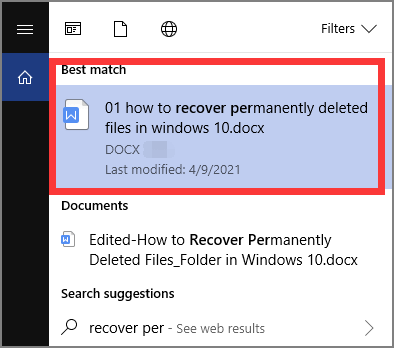
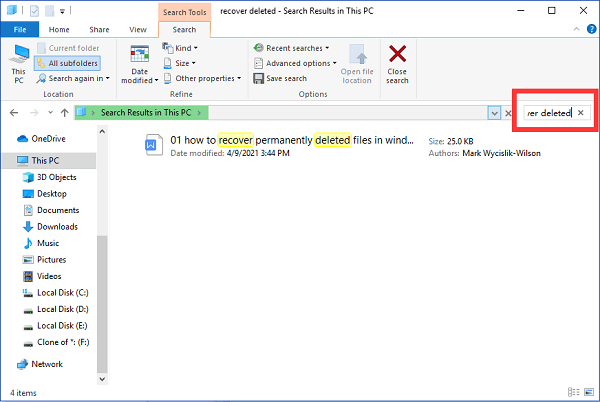
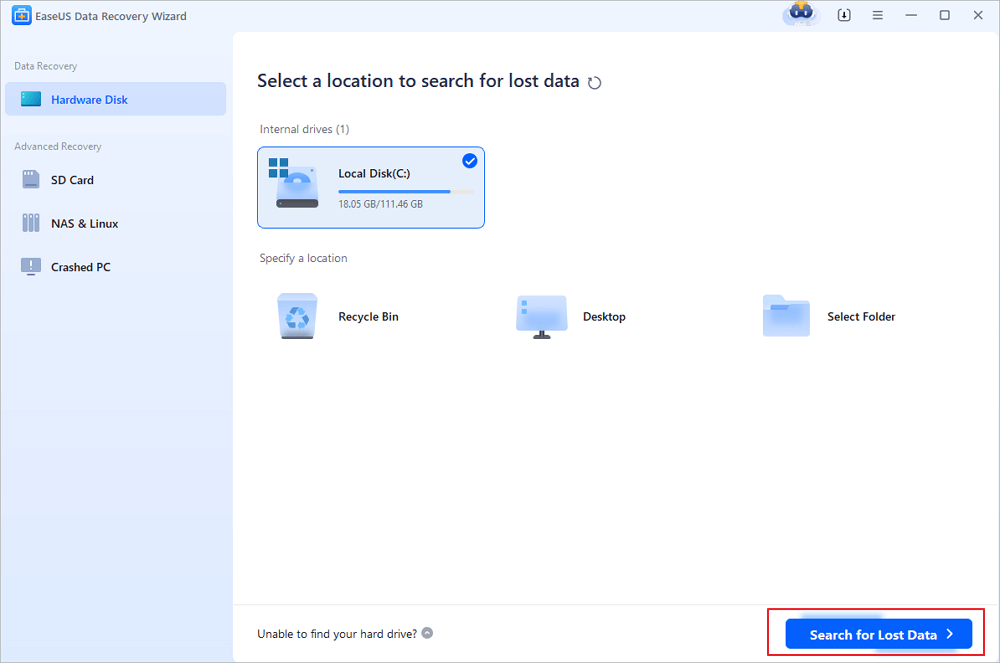
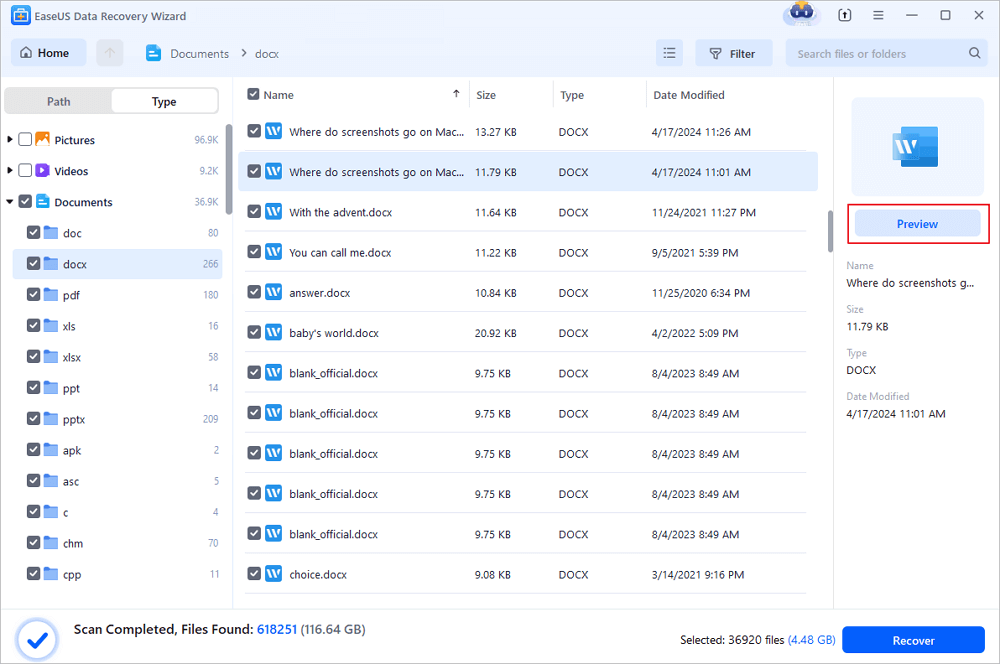
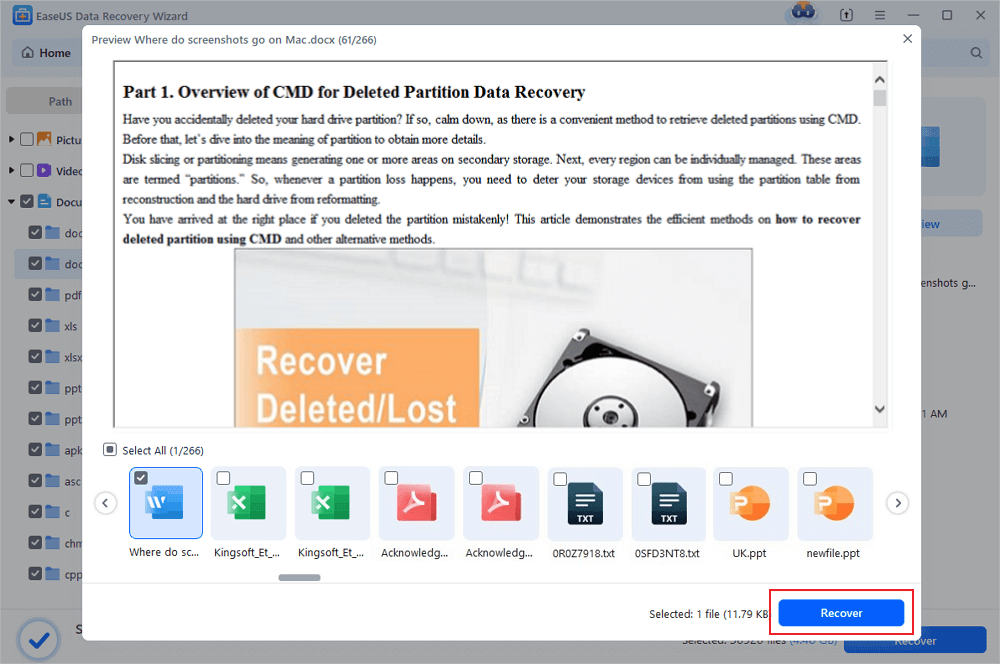

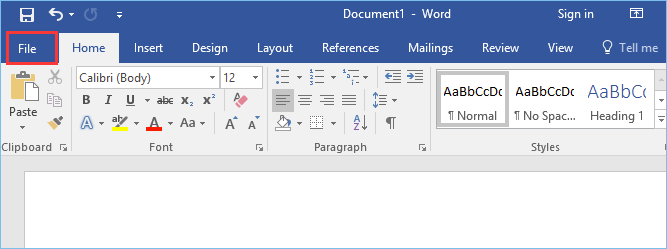
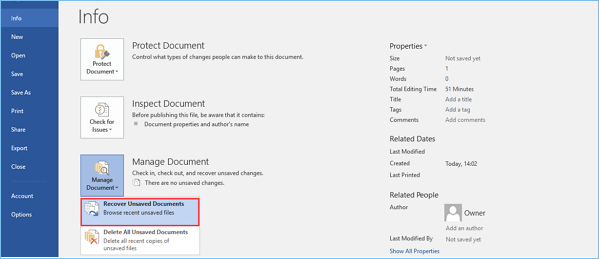

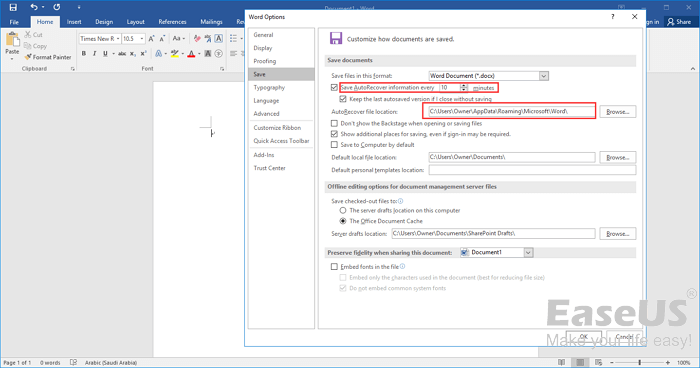
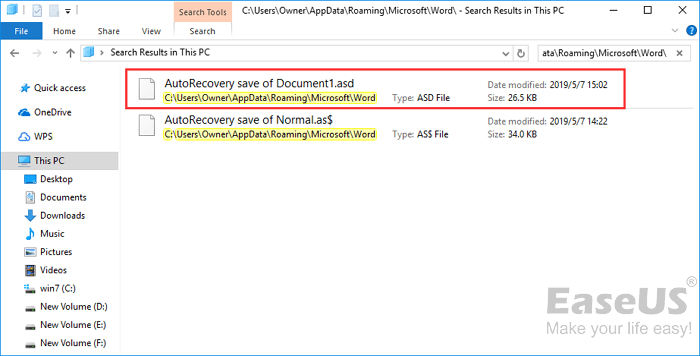
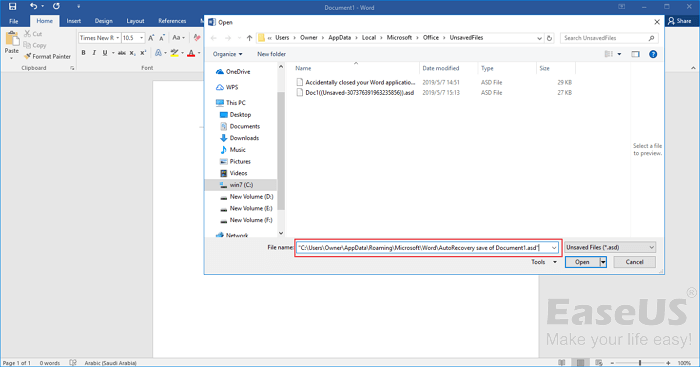
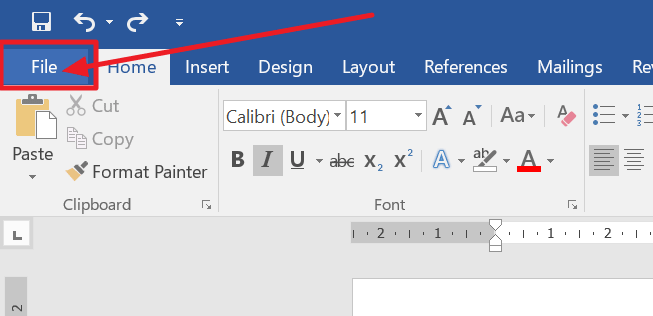
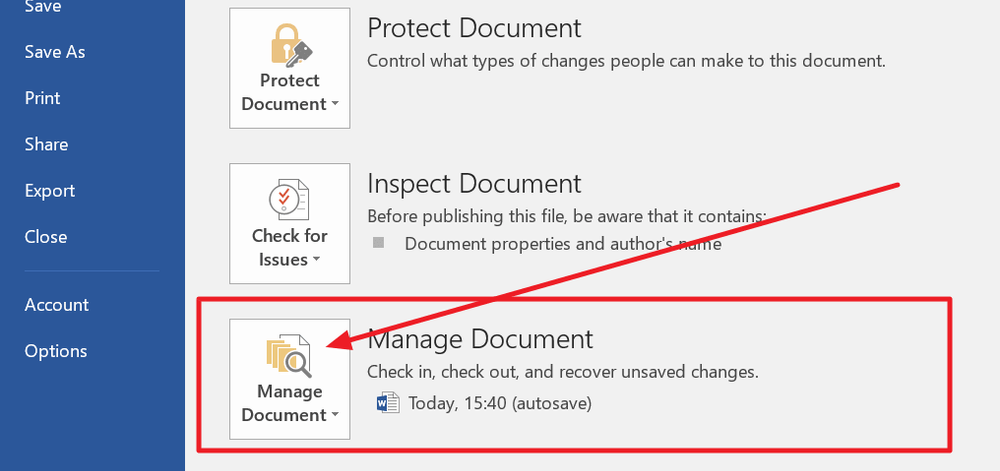
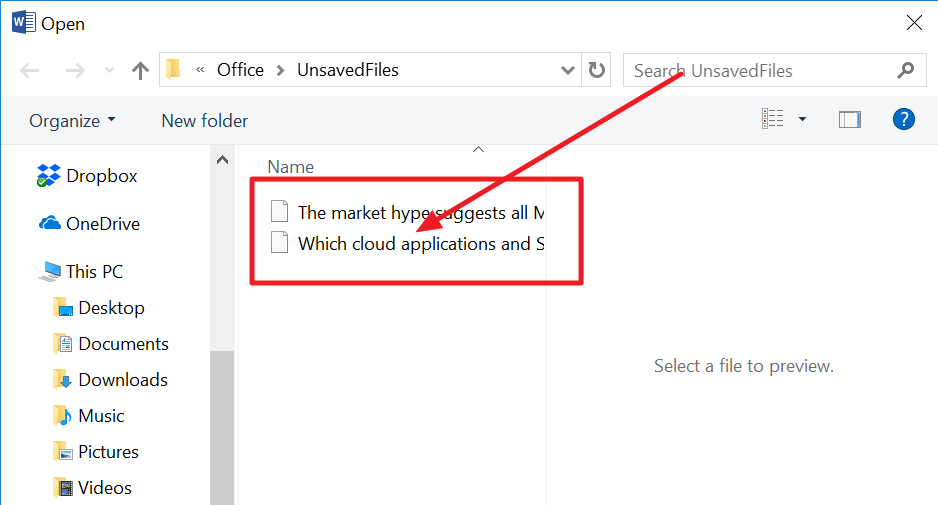
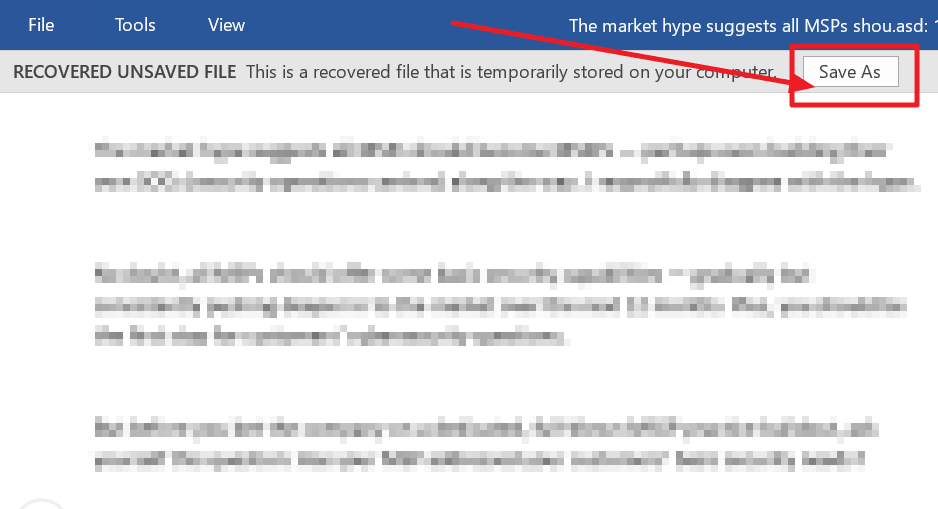
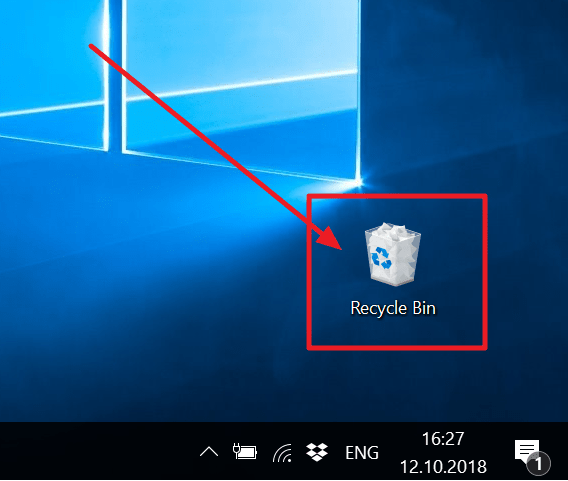
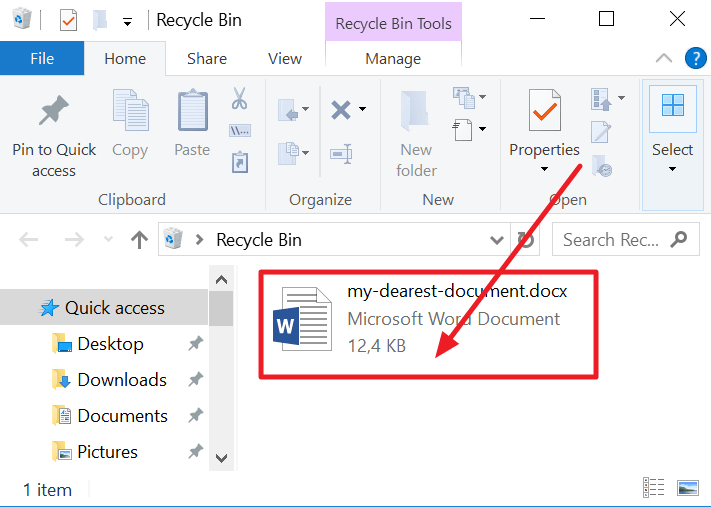
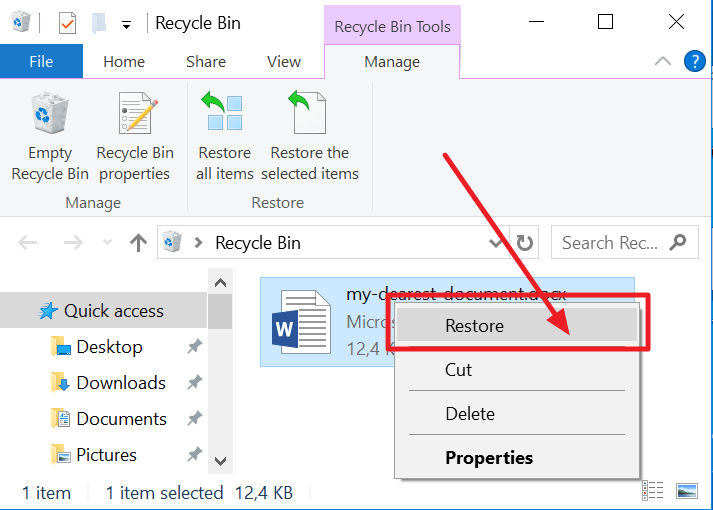
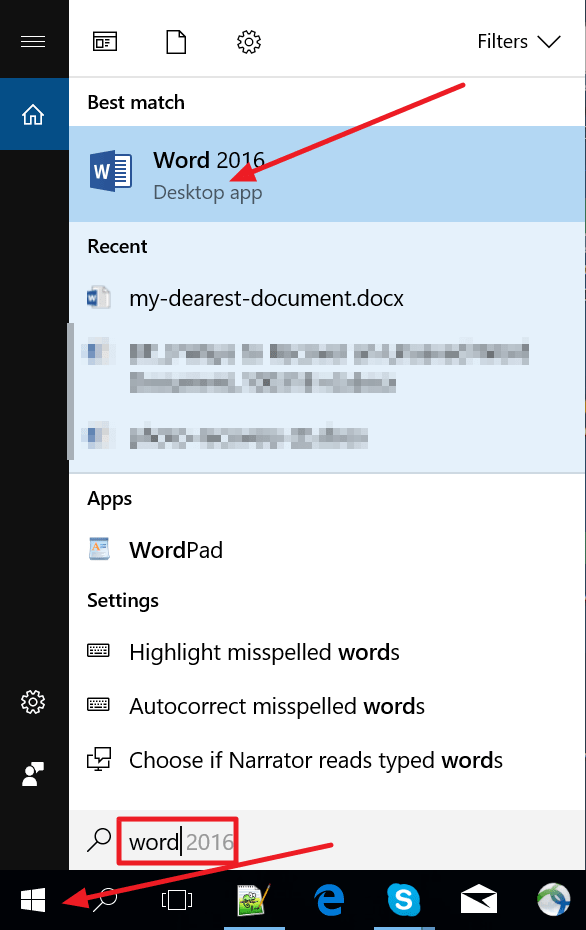
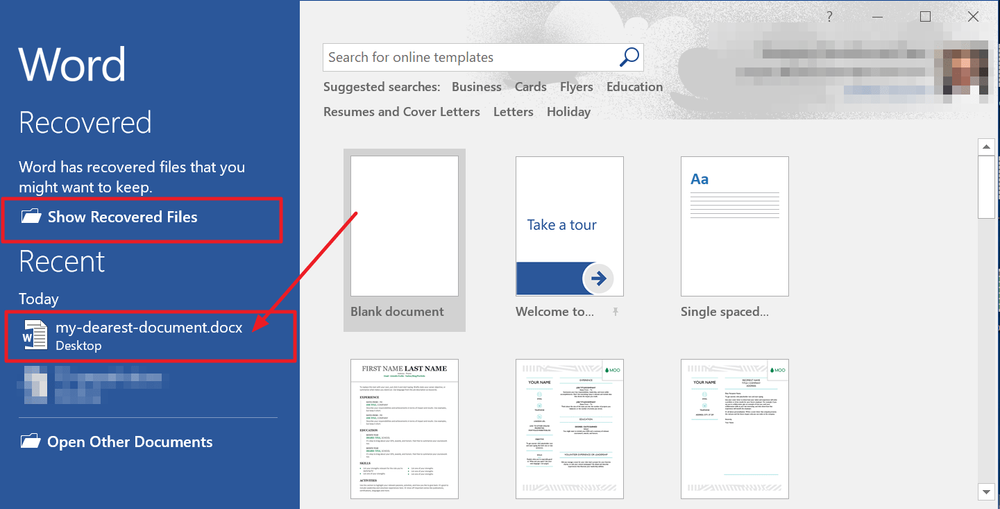
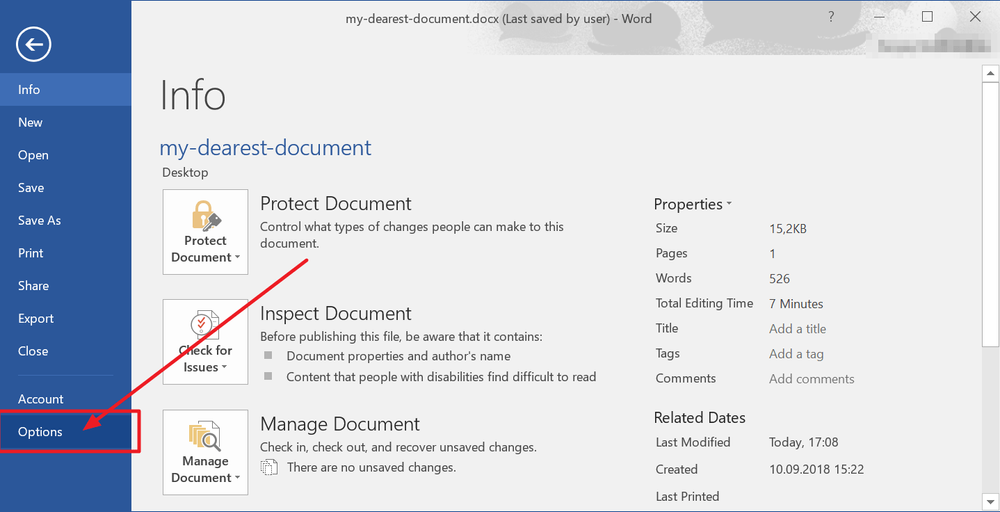
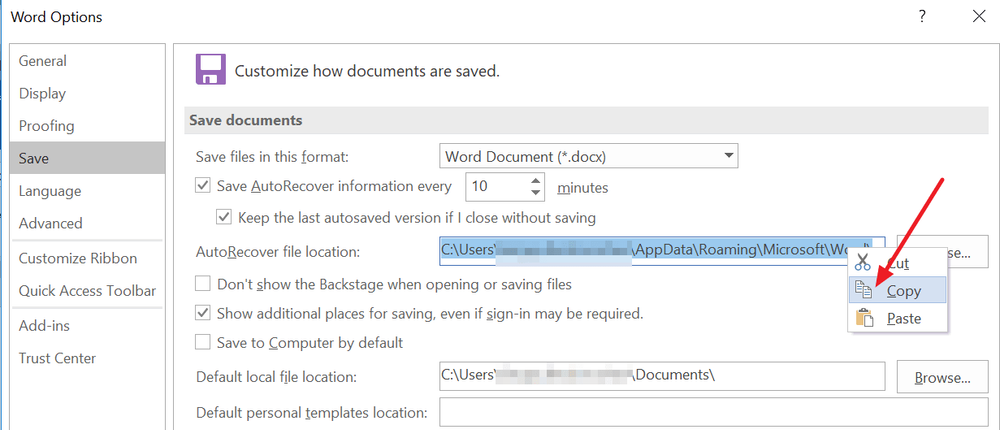
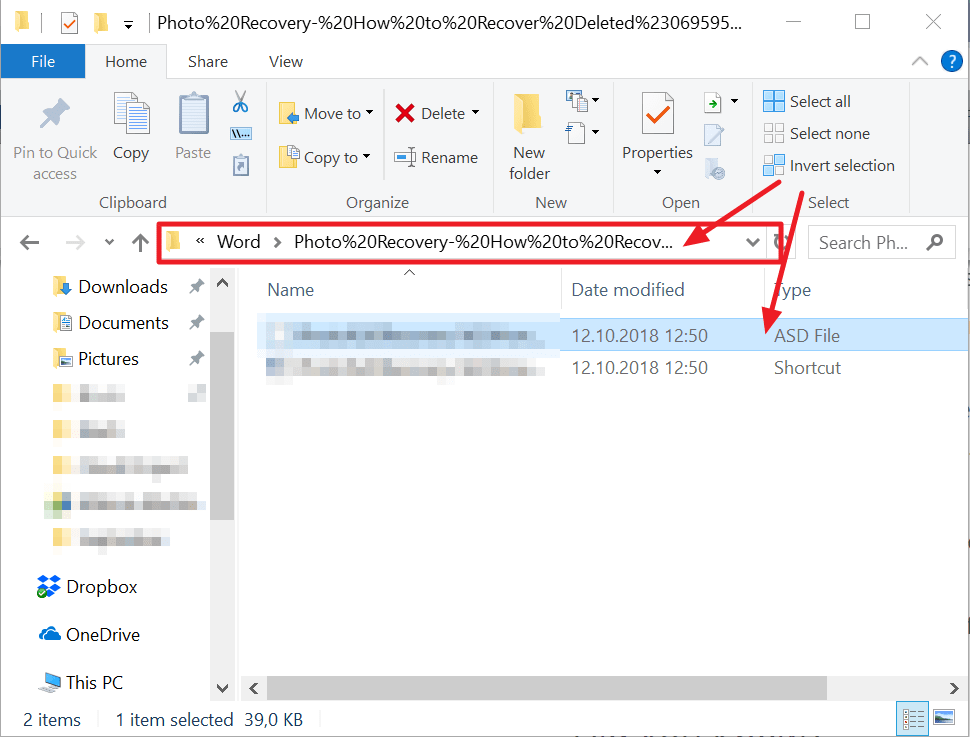
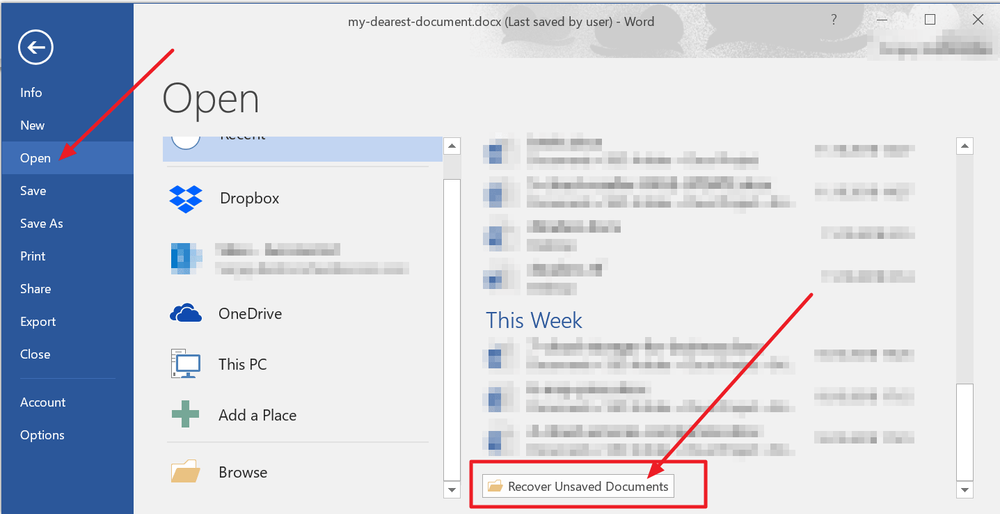

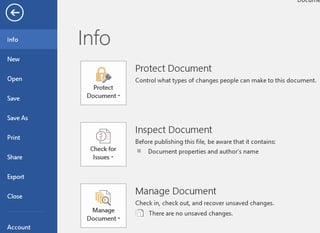

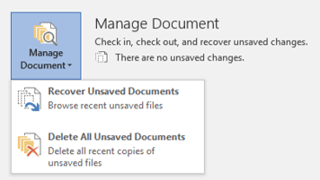
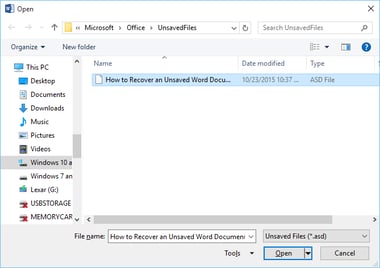


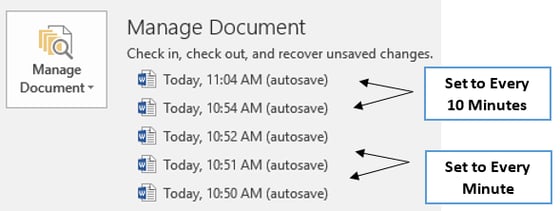


 +R.
+R.





